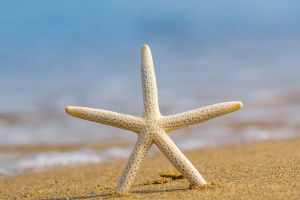The Black Rhino's Last Stand
The Black Rhino, scientifically known as Diceros bicornis, is one of the most endangered species on Earth.
Found primarily in southern and eastern Africa, this magnificent creature has been pushed to the brink of extinction due to habitat loss and, most devastatingly, poaching.
Despite conservation efforts, the black rhino’s survival remains uncertain, making it a global symbol of the ongoing battle to save wildlife.
A Brief History of the Black Rhino
Historically, black rhinos roamed much of sub-Saharan Africa, playing a key role in their ecosystems. As herbivores, they shaped the landscape by eating vegetation, allowing other species to thrive. Unfortunately, their population has declined dramatically. In the early 20th century, hundreds of thousands of black rhinos existed. However, by the 1990s, the numbers dropped by 98%, leaving fewer than 2,500 in the wild.
The sharp decline was caused primarily by poaching, driven by the demand for rhino horns, which are mistakenly believed to have medicinal properties. The horns are also seen as status symbols in some cultures. This illegal trade, combined with habitat destruction from expanding agriculture and urban development, has left the black rhino in a perilous position.
Conservation Efforts: A Glimmer of Hope
Despite these challenges, there is hope. Conservationists and wildlife organizations have been working tirelessly to protect black rhinos from extinction. Anti-poaching patrols, protected reserves, and translocation projects (moving rhinos to safer areas) have helped stabilize the population in recent years. By 2020, the population had grown to around 5,600—a significant improvement, but still far from secure.
One of the key factors in these efforts has been international collaboration. Countries with black rhino populations have worked with global organizations like the World Wildlife Fund (WWF) and International Rhino Foundation to fund anti-poaching efforts and create awareness campaigns.
The Role of Poaching in Their Decline
At the heart of the black rhino’s crisis is poaching. Despite being banned under international law, the illegal trade of rhino horns continues. Horns can fetch up to $60,000 per kilogram on the black market, making them more valuable than gold in some parts of the world. This drives organized crime syndicates to target rhinos, even in protected areas.
The belief that rhino horn has medicinal properties, particularly in some Asian countries, is baseless—scientific studies have shown that rhino horn, made of keratin (the same protein found in human nails and hair), has no medicinal benefits. Yet, this myth persists, fueling demand.
Stricter law enforcement, better education, and public awareness are crucial in stopping poaching. Efforts like these have begun to change attitudes in consumer countries, but progress is slow, and black rhinos remain vulnerable.
Ecological Importance of Black Rhinos
Black rhinos are more than just an endangered species—they are crucial to the health of African ecosystems. As browsers, they eat a wide variety of plants, helping to maintain the balance of the habitat. Without them, overgrowth of certain plant species could occur, negatively impacting other wildlife.
Rhinos are also known as “umbrella species,” meaning that efforts to conserve them also benefit other species in their habitat. Protecting black rhinos leads to the preservation of entire ecosystems, including other endangered animals and plants that share their environment.
How Can We Help?
Saving the black rhino is not just the responsibility of governments and conservation organizations; individuals can make a difference too. Supporting reputable conservation groups, spreading awareness about the plight of the black rhino, and avoiding products made from illegal wildlife trade are all ways to help.
Additionally, sustainable tourism, where travelers visit rhino reserves and contribute to local economies, can provide much-needed funds for conservation efforts. By making ethical choices, individuals can support the preservation of this iconic species and the ecosystems they inhabit.
A Future for the Black Rhino?
While the black rhino population has made a modest recovery, its future remains uncertain. Continued efforts to stop poaching, protect habitats, and raise awareness will be essential in ensuring the survival of this species. Governments must also increase funding for anti-poaching efforts and strengthen international collaboration to combat wildlife crime.
The black rhino stands as a powerful reminder of what is at stake in the fight against extinction. Its survival will depend on global commitment and action. The next few decades will be crucial in determining whether future generations will know the black rhino as a living species or a tragic symbol of human failure.
Film Recommendations:
"The Last Animals" (2017) – This documentary follows conservationists, scientists, and activists as they fight to protect rhinos and elephants from poaching and the illegal wildlife trade. It offers insight into the struggle to save animals like the black rhino from extinction.
"Battle for the Elephants and Rhinos" (2020) – A National Geographic documentary that explores the international poaching crisis affecting both rhinos and elephants, focusing on efforts to combat illegal wildlife trafficking.
"The Rhino Guardians" (2016) – A film about the brave park rangers and local communities in South Africa who are on the frontlines of the battle against rhino poaching, featuring black rhinos and their protectors.


